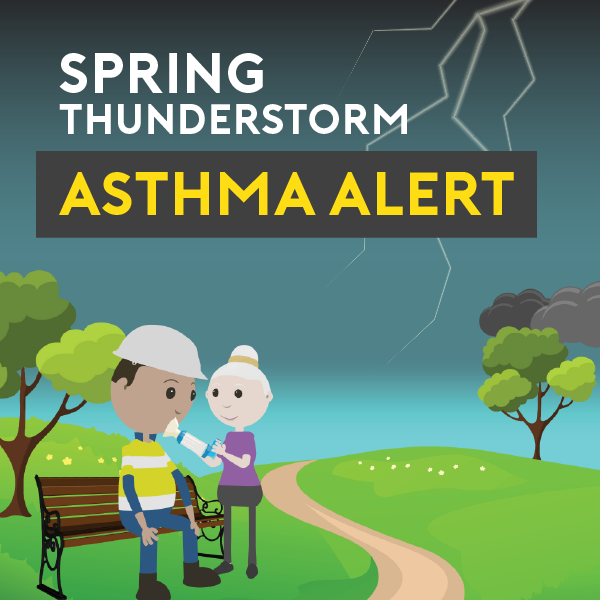Spring Thunderstorm Asthma – Preparing for a Bumper Season
People in the Murrumbidgee area who have breathing difficulties related to asthma and hay fever need to prepare now for the start of the spring thunderstorm season, advises the Murrumbidgee Asthma Collaborative.
This year’s spring thunderstorm asthma campaign will be launched on Wednesday 2nd September, at the Victory Memorial Gardens opposite the Council Chambers at 10.00am.
Murrumbidgee Local Health District (MLHD) clinical nurse consultant for asthma and respiratory Robyn Paton said asthma flare-ups traditionally increase in spring throughout the Murrumbidgee due to high pollen counts, in conjunction with thunderstorm-related weather conditions.
“The key message for people who wheeze and sneeze when preparing for spring is to visit their GP or respiratory specialist for an assessment of their lung health, obtain a current prescription for preventer as well as reliever medication and a written Asthma Action Plan, and then use them,” Ms Paton said.
Local respiratory physician Dr Adriaan Venter said people with asthma need to ensure that their asthma is totally controlled during this period.
“The devastating thunderstorm asthma epidemic in Melbourne in November 2016, and epidemics that have occurred in the Riverina, are evidence of the dangers the weather can pose at this time,” Dr Venter said.
“Wheezing and sneezing have been in abundance in recent months. Mix these conditions with elevated levels of pollen and the typical thunderstorms during the late spring, and we may be at risk of experiencing another epidemic of respiratory-related conditions such as asthma flare-ups.
“If someone does have these symptoms they need to be assessed for asthma and take preventative treatment.”
People experiencing asthma symptoms need to use preventer medication each day plus reliever medication as required. They should not rely on symptomatic treatment such as Ventolin if they have breathing problems. If they have hay fever and sinus these conditions also need to be discussed with their doctor to determine appropriate treatment.
“If breathing difficulties continue when taking a preventer and after taking a reliever medication, it is essential to seek medical help immediately. We aim for control, and good management means not having any asthma symptoms,” Dr Venter said.
The annual spring thunderstorm asthma campaign is promoted by the Murrumbidgee Asthma Collaborative which includes representatives from MLHD, MPHN, Wagga Wagga Base Hospital (WWBH), CSU, Asthma Australia, pharmacy and interested community groups.
This spring thunderstorm asthma campaign launch will also include information about an online register (science.csu.edu.au/asthma) for people with asthma to receive alerts via email or SMS when thunderstorm asthma risk is elevated.

